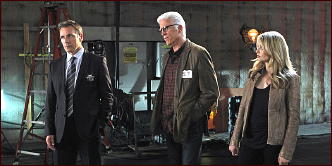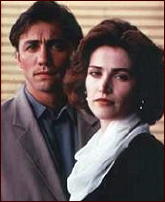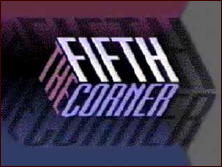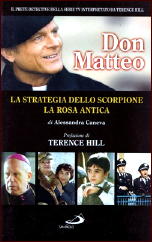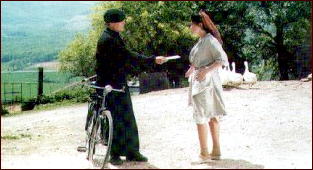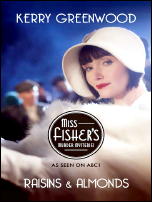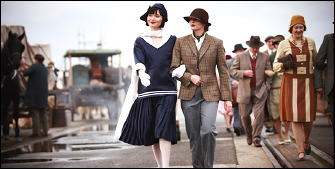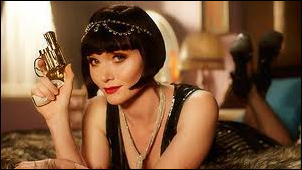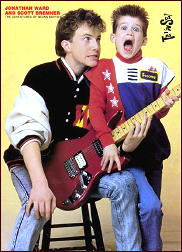Fri 25 Jan 2013
A TV Review by Michael Shonk: CASABLANCA (1983).
Posted by Steve under Reviews , TV mysteries[16] Comments
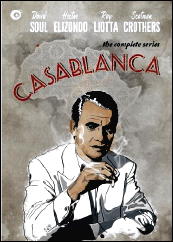
CASABLANCA. NBC, 1983. David L. Wolper Production in association with Warner Brothers Television. Cast: David Soul as Rick Blaine, Hector Elizondo as Captain Louis Renault, Reuven Bar-Yotam as Ferrari, Ray Liotta as Sacha, Scatman Crothers as Sam, Arthur Malet as Carl, Patrick Horgan as Major Strasser, and Kai Wolff as Lt Heinz. Executive Producer: David L. Wolper, Supervising Producer: Howard Gast. Producer: Charles B. Fitzsimons. *** There was no on screen credit for who created or developed the series nor was there any on screen credit for the film or the play it was loosely based on.
This was Warner Brothers second attempt to make a TV series based on the movie CASABLANCA (1942). The first attempt was in 1955 with the first TV program produced by Warner Brothers. WARNER PRESENTS was an early example of a wheel series with CASABLANCA rotating with CHEYENNE and KINGS ROW. For more information, read the informative article by Christopher Anderson at The Museum of Broadcast Communications site.
CASABLANCA (1983) was a limited series of five episodes and served as a pilot for a possible weekly series. But bad ratings resulted in NBC removing the series from its schedule after the third episode. The final two episodes were shown months later.
OK, I am going to assume everyone has seen the film CASABLANCA that starred Humphrey Bogart, Ingrid Bergman, Claude Rains, and Dooley Wilson. If not, do so. As far as I am concerned, CASABLANCA is the best movie ever made.
The setting remains the same, Casablanca French Morocco. The time is 1941, before Ilsa would return to Rick’s life. Rick Blaine, owner of Rick’s Café Americain, Casablanca’s most popular nightclub, has no interest in the War or politics. All he wants to do is run his saloon and mind his own business, something the rest of the world has no intention of letting him do.
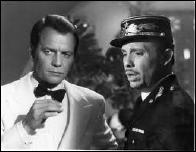
The casting was a problem with this series. David Soul as Rick Blaine? I always enjoy watching Hector Elizondo and here he is a good Claude Rains. But that was the problem the cast faced, none of the actors could match our memories of their characters as played by the original cast of the film.
The most appealing aspect of the series was the look, thanks to Oscar award winner director of photography Joseph Biroc (TOWERING INFERNO, IT’S A WONDERFUL LIFE, HAMMETT) and Oscar winning production designer E. Preston Ames (GIGI, AN AMERICAN IN PARIS, LADY IN THE LAKE). The exterior scenes were weak in comparison and obvious studio lots. The costumes, transportation and heavy use of period music kept us in the time and place, though the original background music rarely helped.
EPISODE INDEX:
“Who Am I Killing?” April 10, 1983. Sunday at 10-11pm (Eastern). Written by James M. Miller. Directed by Ralph Senensky. Guest Cast: Trisha Noble and Christopher Mahar *** Nazi Major Strasser’s romantic crush on Café Americain’s British born singer causes her problems. Like Rick, she doesn’t want to get involved with the politics of the day. Meanwhile, a recently shot down British pilot is wounded and being hunted by the Nazis. The pilot may die without special medicine available only on the Black Market.
Looked great but with no substance. Predictable. Not one original twist or thought in entire episode. Director Senensky discusses the behind the scene filming of this episode here at his blog.
Ratings: 13.5 with a 24 share. Opposite: ABC SUNDAY NIGHT MOVIE (“Altered Statesâ€) 14.2 with a 23 share (average for the two hours) and CBS aired repeat of TRAPPER JOHN 19.8 with a 34 share.
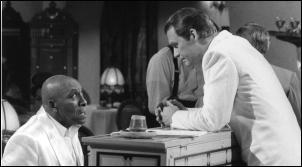
“Master Builder’s Woman.” April 17, 1983. Sunday at 10-11pm. Written by Bob Foster. Directed by Robert Lewis. Guest Cast: Madolyn Smith and Martina Deignan. *** Nazi top Engineer and his female companion arrive in Casablanca. His plans could change the war in Northern Africa. An American woman reporter wants Rick’s help in finding French Resistance fighter Andre Andre.
The story had its moments but was fatally limited by its predictability and weak acting from some of the guest cast especially Martina Deignan as the female reporter. This episode won the Emmy for Best Cinematography in a Series for Joseph Biroc. A deserving choice.
Ratings: 8.6 with a 15 share (ranked 72 out of 74 series). Opposite: ABC SUNDAY MOVIE (“Mountain Menâ€) 17.5 with a 28 share (#18) and CBS aired (repeat) of TRAPPER JOHN 21.5 with a 38 share (#8).
“Jenny.” April 24, 1983. Sunday at 10-11pm. Written by Chester Krumholz. Directed by Mel Stuart. Guest Cast: Shanna Reed and Daniel Pilon *** Rick falls for a whore that reminds him of Ilsa. A Gestapo agent believes someone in Casablanca is selling German war secrets to the British.
This episode was the best of the series. It had spies, murder, political intrigue, humor, and a love story, everything you’d want from a TV series called CASABLANCA.
Ratings: 12.0 with a 20 share. Opposite ABC programming (unknown) and CBS repeat of TRAPPER JOHN 19.1 with a 32 share.
“The Cashier and the Belly Dancer.” August 27, 1983. Saturday at 10-11pm. Written by Nelson Gidding. Directed by Ralph Senensky. Guest Cast: Melinda O. Fee and Michael Horton *** Rick’s customers have left him for the new belly dancer at the Blue Parrot. The wife of Rick’s cashier believes her husband is doing more with the belly dancer than watch her dance.
A weak caper story with an ending that is unbelievable and reduces the threat of the Nazis to the level of Colonel Klink and HOGAN’S HEROES. Director Senensky did a better job than the writer and cast. You can read his experiences about this episode at his blog.
Ratings: 7.0 with a 14 share (66th out of 67). Opposite: ABC aired repeat of FANTASY ISLAND 16.5 with a 32 share (#6) and CBS NFL PRESEASON FOOTBALL 10.7 with a 22 shared (average over entire program).
“Divorce Casablanca Style.” September 3, 1983. Saturday at 10-11pm. Written by Harold Gast. Directed by Robert Lewis. Guest Cast: Persis Khambatta and Zitto Kazann. *** Rick finds himself in the middle between a husband and wife and the Muslim culture while trying to take care of smuggled guns for an old friend.
The series always featured two plots in each episode that would merge at the end of the hour. This episode took on the serious issue of women’s rights in 1940’s Muslim world and shoved it together with a gratuitous second story of Rick taking care of a friend, an old Ethiopian General who was apparently tricked into storing smuggled guns. Information was revealed heavy-handedly as there was no time to develop either story properly.
Ratings: 7.1 with a 15 share (#61 out of 62). Opposite: ABC College Football 10.2 with a 22 share (average over program) and CBS Saturday Night Movies (Country Gold) 11.8 with a 24 share.
I remember watching the first episode in 1983 and hating it. I am more forgiving now towards the cast, writers and directors, realizing how absurd the very idea is of attempting to recreate the magic of the film CASABLANCA as a TV series. But even by a different name, this remains a TV series that deserved to die.
